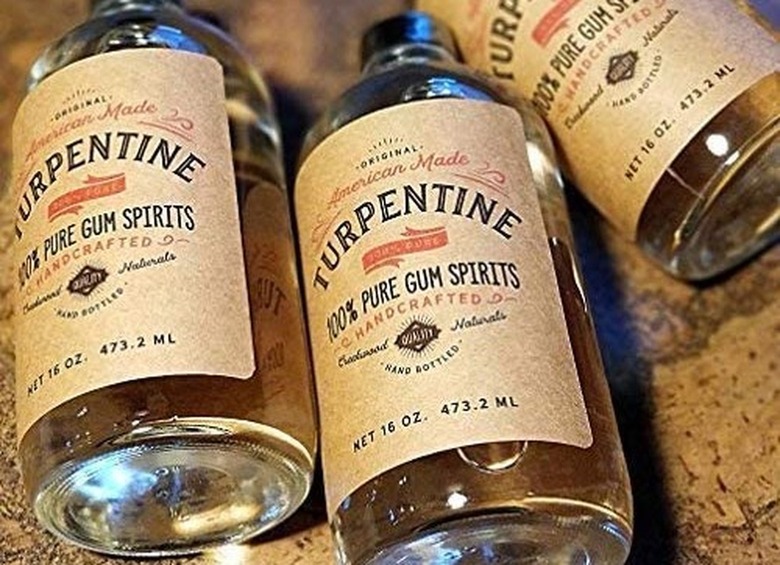How To Safely Dispose Of Turpentine
We may receive a commission on purchases made from links.
If you paint, you're likely to have some turpentine in your garage or basement. When you're finished with your turpentine, it's best to recycle it or give it away if you can. Barring that, you'll need to make sure you dispose of it safely and legally. This usually involves visiting your local household hazardous waste facility, but you may be able to deal with small quantities of turpentine on your own.
Identification of Turpentine
Identification of Turpentine
Ideally, you should store turpentine in a clearly marked container designed for storing flammable liquids. Turpentine can be colorless but is often brownish or yellowish in color. It has a very distinct smell made of a strange combination of the pine trees from which it is derived and sulfur. Smell turpentine once and you'll recognize its unique odor whenever you smell it in the future. Although ingestion is not recommended, turpentine has a hot taste that's reportedly quite unpleasant.
How to Recycle Turpentine
How to Recycle Turpentine
Although it may change color after having a few paintbrushes cleaned in it, turpentine never really goes bad. You can use it again and again until you've used it all. To do so, simply pour your turpentine through a coffee filter. Store the clean turpentine in a tightly sealed, flame-resistant container.
To dispose of the soiled coffee filter, soak up any liquid residue by mixing it into some kitty litter, allowing it to dry completely, and throwing it in the trash. You can do the same with turpentine-soaked rags. Dry them completely and then place them in the garbage. Turpentine is no longer flammable after it dries.
How to Dispose of Turpentine
How to Dispose of Turpentine
If you need to dispose of a turpentine container that is less than 1/4-inch full, you can allow it to evaporate. Open the container and set it in an open, well-ventilated area where no one will disturb it. When the turpentine is gone, you can wrap the empty container in some paper and throw it away in the trash.
When the turpentine container is too full for the evaporation trick, you need to dispose of it at your local household hazardous waste facility. Dumping turpentine down the drain or outside is illegal and potentially toxic to the nearby water supply. The company that collects your trash should be able to tell you where and how to dispose of turpentine even if it can't take it for you.
Turpentine Safety and Storage
Turpentine Safety and Storage
Temperatures as low as 95 degrees Fahrenheit are hot enough to ignite turpentine, so store it carefully. Store it in a nonflammable container that seals tightly to prevent fumes from escaping. Stow the container in a cool, dry area that doesn't get hot. Temperature-regulated storage is best because of turpentine's low flashpoint.
Note too that turpentine fumes can make you quite ill, so always use it in a well-ventilated area. Exposure can cause headaches, dizziness, nausea, a rapid pulse, lung irritation, and throat irritation. Turpentine will burn your eyes if it comes in contact with them, and it can cause skin irritation. Always wear safety glasses and solvent-resistant clothing when working with turpentine.
Uses for Turpentine
Uses for Turpentine
Now that you know how to handle turpentine, you may be wondering what you can do with it. It's an excellent paint thinner and paintbrush cleaner, but it does much more. It cleans paint rollers, trays, sprayer nozzles, and other painting equipment just as well as it does brushes. When applied to new wood, turpentine allows the wood to more readily accept paint or varnish.
Manufacturers also use turpentine in soaps, insect repellents, waterproofing products, and lubricants. Although potentially toxic without proper processing, turpentine is even used in some foods and beverages. It's also found in some external medications, like joint creams and vapor rubs designed to open the chest and sinuses. Turpentine has lots of other household uses as well and can be found in furniture waxes, lice treatments, cleaning products, and lamp fuel.
